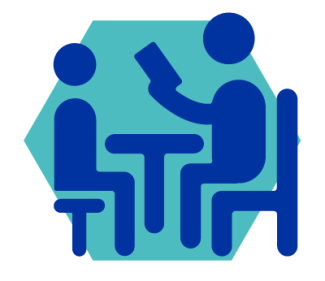These nine core ideas guide the work of the center and the partner schools in which we work. While these nine are not meant to be all-encompassing, we think that schools that actively prioritize them are generally moving toward more student-centered, deeper learning practices.
The Next Gen Nine


Part 1 Next Generation Learning Structures
1. Graduate Competencies
Kentucky law requires schools to teach a broad curriculum and prepare students holistically for their economic futures (see KRS 158.645 & 158.6451). As schools move beyond the era of No Child Left Behind, developing a bold, clear, community-driven vision of the competencies graduates should master is essential to a strong foundation for the transformation of schools. The portrait of a graduate reflects community values and aspirations for graduate competencies, and drives decision-making about the design of learning experiences, use of resources, and a broader, future-focused definition of school and student success.
Phases of Implementation:
- Not Yet/Early Planning: Little/No evidence exists to indicate that a Portrait of a Graduate has been established by the school/district, although planning may be underway.
- Emerging: Portrait of a Graduate is established, but is infrequently referenced and/or used in ways that are not meaningful to the student learning experience.
- Operational: Portrait of a Graduate competencies are an integral part of the design of student learning experiences and academic program.
- Exemplary: Portrait of a Graduate competencies are used to drive learning experiences, and progress toward articulated competencies is monitored in meaningful ways. School/District supports are aligned with Portrait of a Graduate competencies.
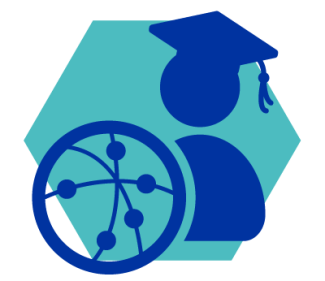
2. Deeper Learning
A variety of research and long-term theories of the best educational practices stretching back to the days of John Dewey find that students are more engaged in durable learning through inquiry-based pedagogical practices that deepen the learner experience largely based on students engaging in authentic work. Such pedagogical practices ask students to engage in more cognitively demanding tasks to move beyond knowledge acquisition to application, analysis, and other higher order thinking skills. Well developed approaches such as project based learning and related methods provide for more consistently deep opportunities for students to not only retain knowledge, but also gain skills articulated in a comprehensive Portrait of a Graduate.
Phases of Implementation:
- Not Yet/Early Planning: Little/No evidence exists that the school is consistently utilizing deeper learning pedagogical practices, although planning to do so may be underway.
- Emerging: Few opportunities for inquiry are provided in core courses and the opportunities that are provided are mostly project-oriented where teachers largely pre-define the parameters of the tasks. Projects have low relevance or authenticity to student interests.
- Operational: Inquiry or project based learning units are regularly implemented throughout core courses but constitute less than half of all instructional time. Deeper learning opportunities are structured into the student academic plan but occur sporadically.
- Exemplary: Teachers largely utilize inquiry or project based learning design as the primary model of instruction in most courses. Students are regularly asked to evidence their higher order thinking skills to apply their learning.

3. Agency
Student agency is broadly defined as students making substantive decisions about the pace, path, demonstration of mastery, and other elements of their own learning experiences. Empowering students to set their own meaningful goals, take action in the direction of those goals, and reflect on their own progress is essential to Next Gen learning in order for students to learn the skills necessary to build deeper understanding of content as well as cross-curricular, transferable skills needed to solve complex challenges in an uncertain future. Student agency is deeply rooted in bodies of research related to self-regulation theory, metacognition, executive function, growth mindset, and human motivation.
Phases of Implementation:
- Not Yet/Early Planning: Little/No evidence exists that the school is fostering student agency, empowerment and voice, although planning to do so may be underway.
- Emerging: Students choose between options provided by teachers. Teachers use a limited repertoire of personalized learning strategies.Learning experiences reflect whole-group learning targets with little personalization.
- Operational: Students take a proactive role in co-designing their own education and planning by proposing or learning pathways and demonstrations of mastery in group settings. Teachers are effectively using instructional practices proven to increase agency of learners.
- Exemplary: Students are the primary drivers in managing their own educational experience and apply their knowledge, skills and available resources, including people. The school regularly fosters the conditions for student agency over learning.
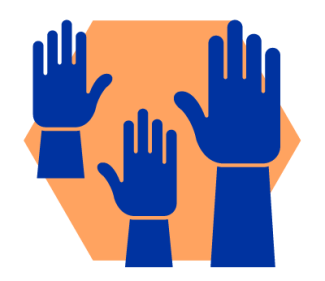
4. Performance Assessment
To capture whether or not students are successfully achieving the graduate competencies, schools must build more complex assessment structures that ask students to make public the complex, deeper learning tasks they undertake. To capture and assess this data deeper learning pedagogies must ask students to complete performance tasks which can be assessed through a variety of mechanisms such as exhibitions of learning, student led conferences, and student defenses. Further, once the student work product is captured through mechanisms such as a portfolio system, the work must be judged and scored against rubrics.
Phases of Implementation:
- Not Yet/Early Planning: Little/No evidence exists of performance tasks or a system to collect, display, defend, or exhibit such tasks. No evidence exists that grading and reporting practices are consistent with mastery of identified competencies.
- Emerging: Some courses include performance tasks and minor opportunities for assessment may exist such as student presentations to other students or teachers, but no systemic model exists for the collection, display, defense, or exhibition of student work. The school does not utilize common scoring criteria and teachers employ rubrics that are written in isolation, with variation in grading practices. Work behaviors(e.g. neatness, lateness, etc.) are reported with students’ performance related to content
- Operational: Students are regularly expected to complete performance tasks that lead to some formal system, but not a comprehensive system of collection, display, defense, or exhibition of student work. Most teachers use common, task-neutral scoring criteria that provide detailed descriptions of knowledge and skills at each expected level of performance. The grading and reporting system distinguishes content knowledge and skills from habits of work.
- Exemplary: A comprehensive system of performance assessment exists in which most courses have articulated performance tasks that lead to portfolio defenses as well as additional structures such as student led conferences and/or student exhibitions. All teachers use common, task-neutral scoring criteria that provide detailed descriptions of knowledge and skills at each expected level of performance. The grading and reporting system distinguishes content knowledge and skills from habits of work
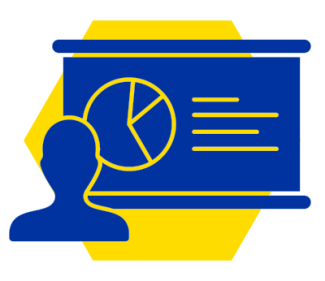
5. Teaching Culture
To support the deployment of Next Generation Learning practices across the previous domains, a professional culture of teaching that values teachers as professional leaders of deeper learning experiences is needed at the school level. To support such professional teaching cultures, schools can take a series of proactive steps to support teachers from regularly utilizing project tuning, developing internal professional learning supports, developing instructional coaches, teacher induction and mentoring models, and teacher learning validation models such as micro-credentials.
Phases of Implementation:
- Not Yet/Early Planning: Little/No evidence of a professional learning culture that is actively assisting teachers in implementing deeper learning practices. Teachers are expected to implement a standardized curriculum with little professional autonomy.
- Emerging: Professional development opportunities for supporting teachers in deeper learning practice are provided in traditional settings, such as PLC meetings. Teachers are not provided leadership roles in mentoring or coaching others. Teachers are provided little professional autonomy in instructional decisions with some usage of standardized curriculum.
- Operational: Specifically designed opportunities for teachers to improve their practice and support for teachers to attend external development opportunities. Implementation of inquiry learning supports, such as project tuning. Teachers leading design of projects. A functioning induction or mentoring model for emerging teachers.
- Exemplary: The school hosts development opportunities for teachers that share expertise within the staff, in addition to other internal and external supports. Robust teacher induction, mentoring, and coaching model relying on internal expertise. Large amount of teacher autonomy in instructional design including teacher created curriculum.


Part II Access of Opportunity Structures
6. Culturally Relevant
The school’s curriculum and pedagogy choices should reflect the experiences and backgrounds of the students whom the school serves to the maximum extent possible. Deeper learning pedagogies and assessment practices provide the opportunity to engage the community context by choosing projects and performance tasks that allow students to access their cultural knowledge and strengths. Further, authentic projects frequently allow students to engage not only in learning about culturally relevant issues of social justice but also to engage through designing and executing projects.
Phases of Implementation:
- Not Yet/Early Planning: Little/No evidence of locally authentic and culturally relevant curriculum, pedagogy, or assessments. Nearly all learning is standardized with heavy usage of external resources such as textbooks and standardized assessments.
- Emerging: Some evidence of locally developed authentic and/or culturally relevant curriculum, pedagogy, or assessments. Examples of such student work are present but sparse. Most learning is standardized with heavy usage of external resources such as textbooks and standardized assessments.
- Operational: Evidence of a mix of locally developed authentic and culturally relevant activities along with some continuing usage of standardized external resources. Examples of authentic, culturally relevant student work are readily available and most students have access to some authentic and culturally relevant work on a monthly basis.
- Exemplary: A majority of student work is locally developed, authentic, and culturally relevant with plentiful examples of such work including an ability for each student to show multiple projects per year. Students have access to some authentic, culturally relevant work on a weekly or daily basis with limited usage of external resources such as textbooks or standardized assessments.

7. Access to Opportunities
To access the learning structures that provide students college-going opportunities, schools must work hard to limit the structural barriers that unintentionally track and marginalize students. Such tracking can place students in lower track courses with low expectations that preclude students from developing the skills and confidence needed to pursue future opportunities. A challenging, broad, thinking curriculum should be available to all students, including students with disabilities with appropriate supports through comprehensive practices. Further, schools should be considerate of students that are English language learners and recognize that such students are developing bilingual strengths that can be an asset beyond the typical Kentucky student.
Implementation Guide:
- Not Yet/Early Planning: Little/No evidence of attempts to limit tracking with wide disparities in access to advanced courses. No evidence of practices to consistently place students within the least restrictive environment. Language minority students are frequently removed from the regular education classroom and viewed in a deficit model.
- Emerging: Initial attempts to limit tracking with some evidence of expanded access to advanced courses. School has some evidence of employing a least restrictive environment model but some students are in self-contained classes. Language minority students are included occasionally, with supports, in high quality learning experiences. Little evidence of professional development on accessible teaching practices.
- Operational: School has policy and practices that provide access to advanced courses to students with little or no low-track courses. School places most students with identified disabilities in the classroom with few students in self-contained classes. Students with disabilities and English language learners are included in the social-life of the school. Language minority students viewed as emerging bilingual students by some faculty and staff. Language minority students included within most classroom activities with supports. Evidence of some professional development on accessible teaching practices.
- Exemplary: School has little tracking either to low or advanced courses with all students placed in rigorous, broad, and deeper learning based courses. Only the most severely disabled students are excluded from the primary classroom with appropriate modifications and supports provided within the classroom. Students with disabilities and English Language Learners are included in the social-life of the school. Language minority students viewed as emerging bilingual students and included within opportunities that permit their bilingual strengths to emerge. Evidence of ongoing professional development on accessible teaching practices.
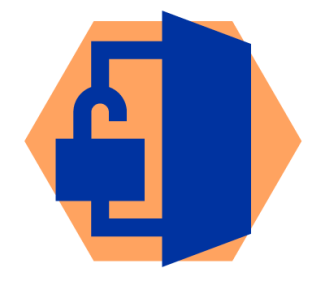
8. Positive, Restorative, Non-Exclusionary School Discipline
School discipline events are one of the most culturally revealing metrics on the opportunity to participate in the learning provided at the school. When students are excluded from the classroom through expulsion and suspension, including in-school suspension, the missed opportunities and lasting impact can serve to define potential pathways for children away from their full potential. When these exclusionary practices are used disproportionately to minority, low-income, or special needs populations the result can be both damaging to the individual student both also serve to reinforce the marginalization of particular groups within our society. Schools can proactively counteract traditional school discipline usage and disparities by embracing positive and restorative policies and practices to help students remain in the classroom.
Phases of Implementation:
- Not Yet/Early Planning: Existing evidence shows large disparities in application and high usage of suspensions and expulsions (more than 100 events per 100 students per year). No evidence of positive or restorative policies or practices. The school does not have an SBDM or board adopted adopted policy or practice.
- Emerging: Existing evidence shows moderate disparities and/or usage of suspensions or expulsions. The school can articulate, but show limited evidence for, positive or restorative practices. The school does not have an SBDM or board adopted adopted policy or practice. The school has minimal support for students excluded from the classroom.
- Operational: Existing evidence shows low disparities and low usage of suspensions or expulsions (less than 50 events per 100 children per year). The school can show evidence of implementation of positive or restorative practices, including some policy evidence of adopted practices. The school has multiple supports for students excluded from the classroom.
- Exemplary: Existing evidence shows no disparities and low usage of suspensions or expulsions (less than 20 events per 100 children per year). The school can show evidence of a well-implemented positive or restorative practice that is in line with existing adopted policy. The school has many supports for excluded students including a strategy for socio-emotional supports and successful reintegration.
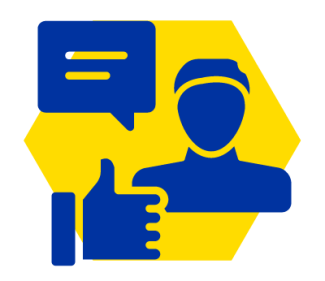
9. Advising and Mentoring
For students to realize the opportunities provided in school, particularly through college access structures like dual credit, additional support beyond the traditional classroom is necessary. This includes a range of structures and strategies that guide, advise, or mentor learners on issues related both to success in school as well as provide access to community resources to support learners on challenges outside of school. guidance counselors are critical additional support for students in school when they are afforded the time to provide counseling to students. Additional dedicated staff time to support dual credit courses and student and family advising for college transitions can be particularly impactful. Additionally, depending on school size and resources, schools that seek to provide extended opportunity and additional student support personnel for mental health and advising. Further, schools can adopt structures such as advisory or mentoring models that provide time within the school day for an adult in the building to have deeper relationships and support students in both academic and non-academic needs. Finally, schools can support students through intentional and direct linkages to community resources available for mental and physical health, including providing direct support to students and families such as providing transportation or delivering the services within the school.
Phases of Implementation:
- Not Yet/Early Planning: Guidance Counselor to student ratio extremely high, over 400:1. Few staff dedicated to supporting non-academic needs of students. No evidence of existing advisory or mentoring program for all students. Little/no evidence of intentional linkages for students to community mental or physical health services. Unclear staffing leadership for dual credit implementation. No existing plan to support teachers obtaining dual credit certification.
- Emerging: Guidance Counselor to student ratio high, less than 400:1. Evidence of some staff dedicated to supporting non-academic needs of students. Limited evidence of a functioning student advisory or mentoring model. Some evidence of intentional linkages for students to community mental or physical health services. Sporadic evidence of support for college access and transition, such as college visits or parent nights. Dual credit leader identified but not prioritized in time allocation or job description.
- Operational: Guidance counselor to student ratio moderate, less than 300:1. Evidence of robust staff support, relative to school size, dedicated to supporting non-academic needs of students. Student advisory or mentoring model in place, including adopted into policy. Evidence of multiple intentional linkages for students to community mental or physical health services. Evidence of consistent and systematic support for college access and transition for both students and families. Intentional efforts to include all students. Clearly identified college access and dual credit leader known by students. Students provided college advisor and/or dual credit coach
- Exemplary: Guidance counselor to student ratio within the recommended ratio of 200:1. Evidence of robust staff support, relative to school size, dedicated to supporting non-academic needs of students. Evidence of student advisory or mentoring model functioning well, including adopted into policy. Evidence of multiple intentional linkages for students to community mental or physical health services, including evidence of direct support for these services by the school such as transportation or providing the services onsite. Evidence of consistent and systematic support for college access and transition, including school supported college visits and family counseling. College options are provided to all students. College access or dual credit leadership position composing 50% or more of a staff position.
